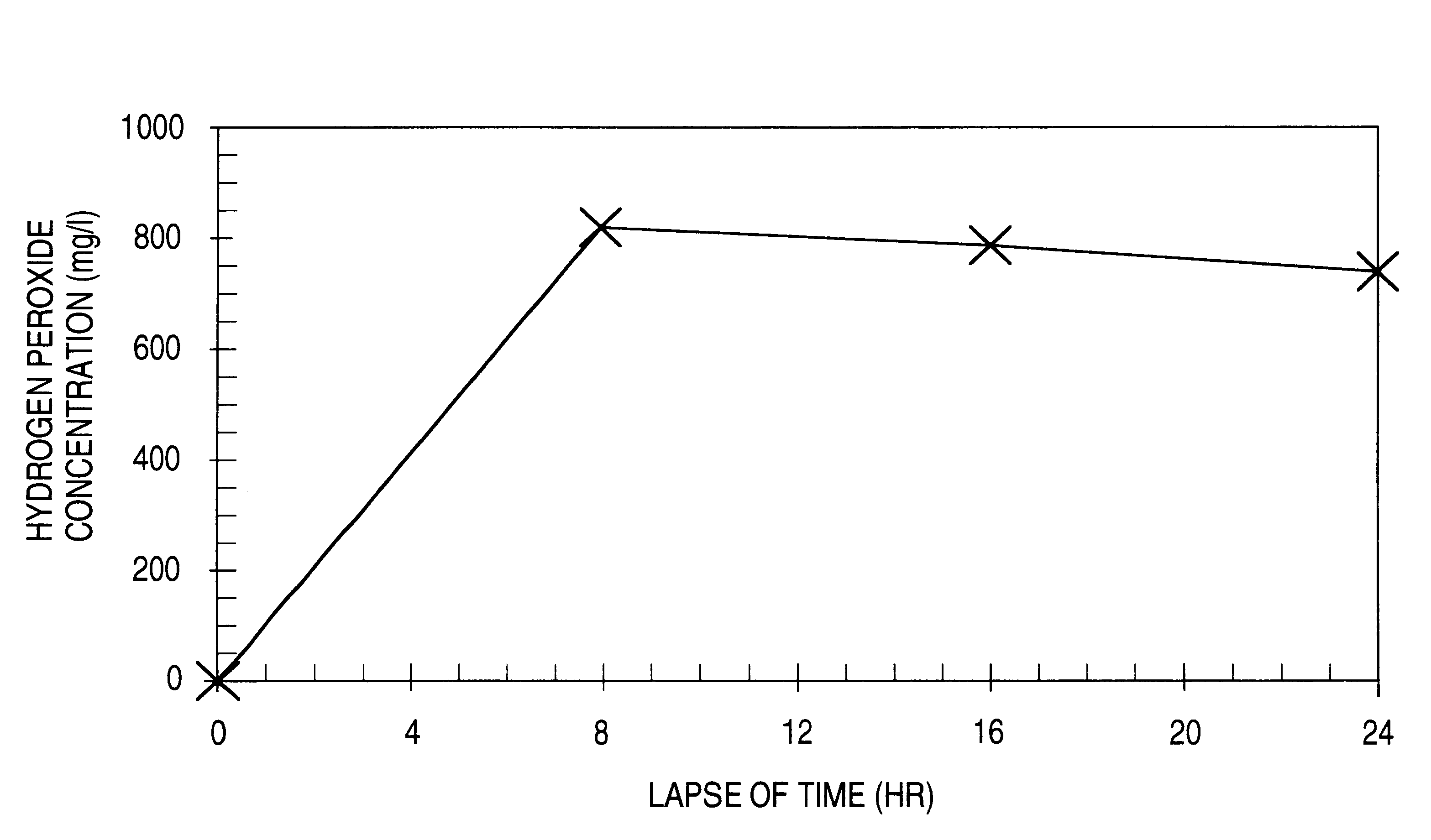Ice composition containing hydrogen peroxide and method of storing perishable food
a technology of hydrogen peroxide and ice composition, which is applied in the direction of fruit/vegetable preservation by freezing/cooling, domestic cooling apparatus, lighting and heating apparatus, etc., can solve the problems of insufficient technology for fully inhibiting putrefaction and achieving freshness preservation, inconvenient long-term storage, and insufficient freshness preservation and bactericidal
- Summary
- Abstract
- Description
- Claims
- Application Information
AI Technical Summary
Benefits of technology
Problems solved by technology
Method used
Image
Examples
example 2
Seawater was directly supplied as a feed water to an electrolytic cell to obtain a seawater containing hydrogen peroxide in a concentration of 5,200 mg / l. This seawater was diluted with additional seawater to a hydrogen peroxide concentration of 500 mg / l. A 100 ml portion of this water was placed in a polypropylene vessel and quickly frozen. After 3 days, the resulting ice was thawed and examined for the concentration of residual hydrogen peroxide. As a result, the residual hydrogen peroxide concentration was found to be 490 mg / l and the degree of remaining hydrogen peroxide was 98%.
example 3
1 kg of the hydrogen peroxide-containing ice composition produced in Example 1 and 1 liter of a 3 wt % aqueous sodium chloride solution as a pseudo-seawater were placed in a container made of a styrene resin foam. The resulting mixture was stored in a room at a temperature of 25.degree. C. for 24 hours to determine the relationship between the lapse of time and the hydrogen peroxide concentration in the pseudo-seawater. The results obtained are shown by the graph of the accompanying FIGURE.
It was found that the hydrogen peroxide concentration in the pseudo-seawater could be maintained almost constant over a long period of time as shown in the FIGURE. It is expected from these results that an appropriate constant hydrogen peroxide concentration can be maintained over a long period of time by regulating the hydrogen peroxide concentration in the ice composition and changing the proportion of the hydrogen peroxide-containing ice composition to the seawater or the like.
example 4
The aqueous hydrogen peroxide solutions obtained by the methods described in Examples 1 and 2 were diluted with municipal water to adjust the hydrogen peroxide concentration to 100 mg / l. Each of the diluted aqueous hydrogen peroxide solutions was placed in a polyethylene vessel and frozen in a freezer. The frozen water containing hydrogen peroxide and a cotton cloth (5.times.5 cm) which had undergone high-pressure steam sterilization (121.degree. C., 15 minutes) and then dropping of a liquid containing Escherichia coli (number of cells: 10.sup.6 -10.sup.7 / ml) thereon were placed in a container made of a styrene foam. The container was stored in a thermostatic chamber (5.degree. C.) for 24 hours. After the 24 hours storage, the cotton cloth was taken out of the container and rinsed with 20 ml of an SCDLP culture medium (SCDLP medium manufactured by Nihon Seiyaku Co., Ltd. to which 0.1% sodium thiosulfate had been added). The resulting rinsing was examined for the number of viable ce...
PUM
| Property | Measurement | Unit |
|---|---|---|
| melting point | aaaaa | aaaaa |
| temperature | aaaaa | aaaaa |
| temperature | aaaaa | aaaaa |
Abstract
Description
Claims
Application Information
 Login to View More
Login to View More - R&D
- Intellectual Property
- Life Sciences
- Materials
- Tech Scout
- Unparalleled Data Quality
- Higher Quality Content
- 60% Fewer Hallucinations
Browse by: Latest US Patents, China's latest patents, Technical Efficacy Thesaurus, Application Domain, Technology Topic, Popular Technical Reports.
© 2025 PatSnap. All rights reserved.Legal|Privacy policy|Modern Slavery Act Transparency Statement|Sitemap|About US| Contact US: help@patsnap.com


